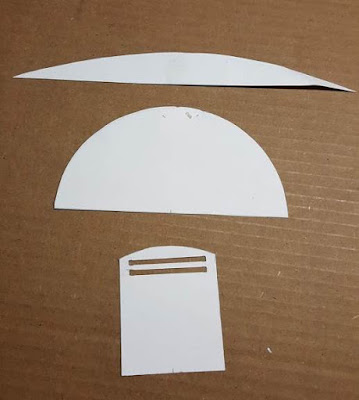The center foot shell was build pretty much the same way at the outside foot shell, although the middle foot doesn’t have any curved surfaces to I made it all from wood.
I started with the part where that foot attaches to the ankle which is made from plywood.
The front and back were made from luan plywood. Here you can see how the edges were beveled so the edges matched up correctly.
To cut the slot I tapped the two pieces together so that they would match up when I cut them.
Here is the foot with the ends attached. I have also installed a t-nut where the angle will eventually bolt on.
I don’t have any pictures, but the sides were also made from luan playwood. I glued small strips of wood on the inside of the end panels to help attach the sides.
The bottom part of the foot shell was made just like I did for the outside feet, strips of pine cut with the appropriate angles and then attached to the bottom of the foot.















































